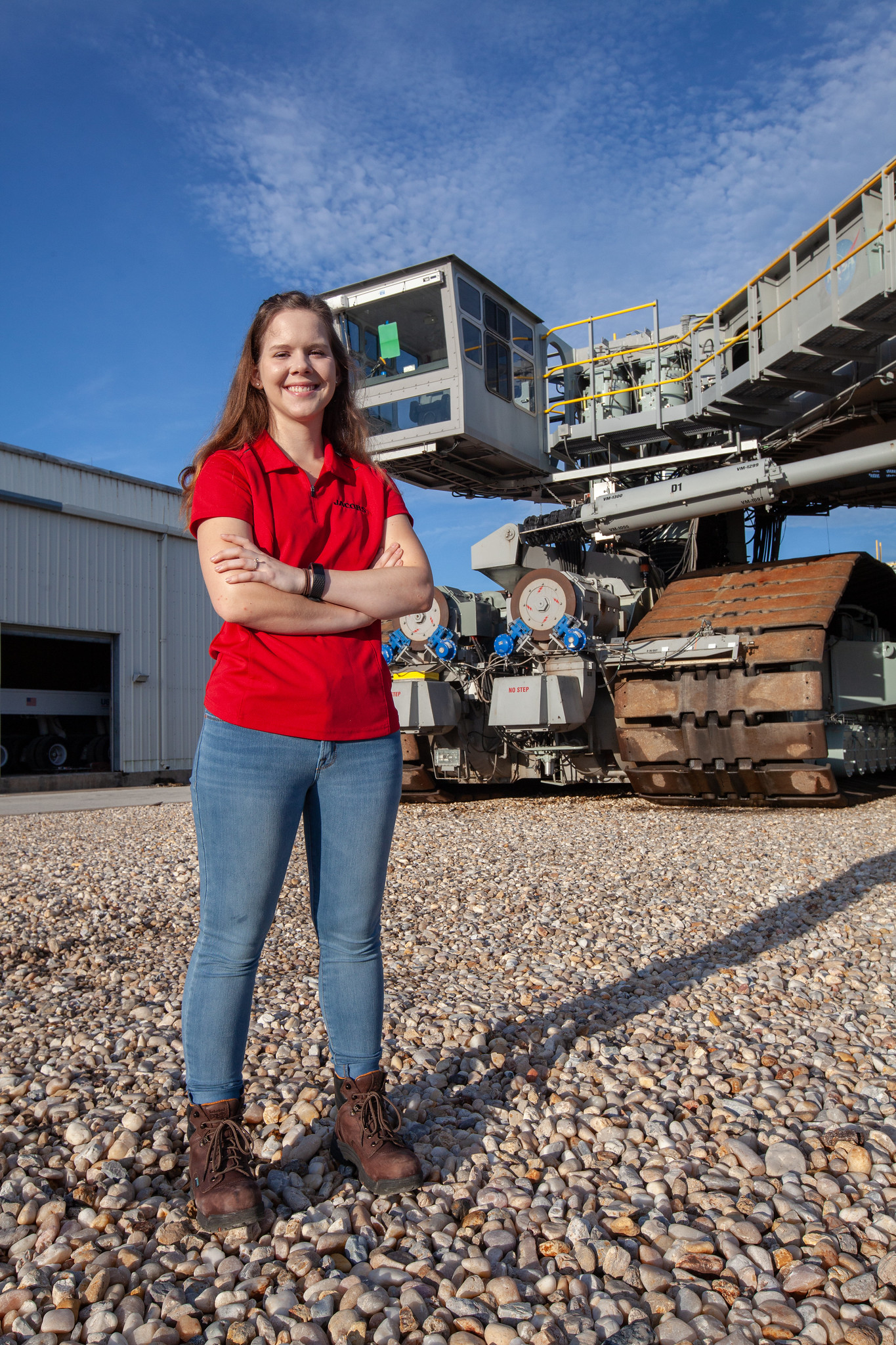By Danielle Sempsrott
NASA’s Kennedy Space Center
Weighing in around 6 million pounds, NASA’s crawler-transporter 2 will carry the agency’s mobile launcher with the Space Launch System (SLS) rocket and Orion spacecraft – an additional 18 million pounds – from the Vehicle Assembly Building (VAB) to Launch Pad 39B for the launch of Artemis 1. And driving all of that weight around is no easy task – something that Breanne Stichler, one of the few women to ever drive the crawler, is discovering.
Stichler, 22, is a mechanical engineer and now one of nine crawler drivers at NASA’s Kennedy Space Center in Florida, and is still learning how to drive the enormous vehicle.
“Getting to drive the crawler is a rare opportunity, because there are only two in existence,” said Stichler. “It’s also very intimidating because of its massive size.”
The entire journey down the crawlerway from the VAB to the pad – just over four miles – takes a minimum of eight hours. Learning how to drive the crawler-transporter requires specialized training with a second engineer in the cab as well as communication between the driver and other engineers and technicians regarding direction, any necessary adjustments, level readings and more.
“The straight sections of the crawlerway are surprisingly difficult. Because of the size of the crawler, you don’t feel like you’re moving off course as much as you really are,” said Stichler.
After mastering the art of driving straight, she’ll begin learning how to drive the curves. Given that the crawler-transporter is large enough to fit a baseball diamond on top, turning requires a little more practice. Since the vehicle is only designed to make six-degree turns, drivers need to start turning well in advance when approaching curves on the crawlerway.
“Driving the crawler is a bit like steering a large ship,” said Stichler. “And when the rocket is onboard, it will be like steering a large ship with a skyscraper on top.”
In order to drive alone, engineers have to complete a certification process that can take a few years, depending on how often the crawler moves and how many opportunities there are to drive and perform the specific maneuvers the certificate requires. Even once drivers are certified to drive alone, a backup is usually present in the cab whenever possible.
“Being a certified crawler driver is not just learning how to drive the crawler. You must also understand and be able to operate the crawler’s other major subsystems,” said John Giles, crawler project manager. “After one to two more years of on-the-job training, Breanne will be on her way to becoming a certified crawler driver.”
Stichler is part of a younger workforce at Kennedy – the Artemis generation – preparing to expand human exploration to the Moon and on to Mars.
A recent graduate from the University of Central Florida, she received her degree in aerospace engineering. The summer before her senior year, Stichler interned for Jacobs Engineering Group Inc. on the Test and Operations Support Contract in the asset management department. Through this internship, she had the opportunity to work on multiple projects, and it was there that she was first introduced to the crawler.
“It’s awesome being a part of the Artemis program,” she said. “Being out here has always been a dream of mine, and it’s exciting to have that dream turn into reality at such a historic time for NASA.”
The next big move for the crawler will take place this fall to bring the mobile launcher back to the VAB from the pad – where it has been since June undergoing final testing –to begin preparations for SLS and Orion stacking for its first-ever deep space launch.



























